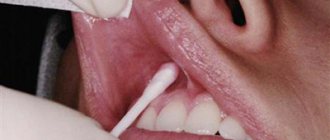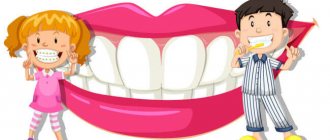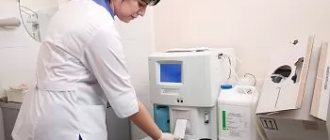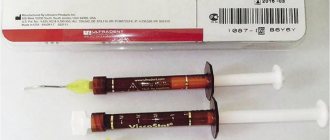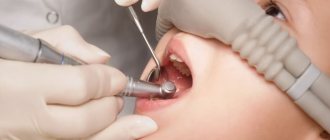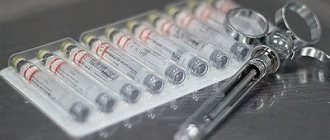Infiltration anesthesia is one of the types of local anesthesia, in which the anesthetic is administered using a syringe into the soft gingival tissue. In dentistry, it is one of the most common, as it can ensure painless dental procedures for sixty minutes or more. Among dental patients, it is called “freezing” because after its administration, depending on the area of anesthesia, numbness is felt in the tongue, upper/lower lip, cheek, oral cavity or part of the face.
Specialists of the dental department of CELT use different types of infiltration anesthesia in the treatment of pulpitis, deep caries, and tooth extraction. The process uses various new generation drugs that have proven themselves well. Their diversity allows you to choose the one for which the patient has no contraindications. The active substances of their composition are quickly eliminated from the body. You can find out the price of infiltration anesthesia in the price list, in the “Services and Prices” section. To avoid misunderstandings, check the numbers with our information line operators or during a consultation with a doctor.
Consultation with a dentist-therapist - 1,000 rubles.
Infiltration anesthesia, conduction anesthesia - 500 rubles.
At CELT you can get advice from a dental specialist.
- The cost of a consultation with a dentist-therapist is 1,000
Make an appointment
Infiltration anesthesia in dentistry
The operating principle of infiltration anesthesia is to stop the nerve impulse that is transmitted from the pulp to the brain. It is manifested by numbness of the treated area: sensitivity is restored as the components of the drug are broken down in cellular tissues. The effect is achieved almost instantly and covers only a certain area, and the drugs used are safe for the human body, since the concentration of active substances in them is minimal.
In order to eliminate the risk of an allergic reaction to the anesthetic in the patient, the dentist conducts preliminary testing. Having individually selected the drug, he determines its dose and injects it into the tissues by injection, following a certain technique. Distributed throughout the cells, the anesthetic stops nervous activity and eliminates pain during dental procedures. It can be entered:
- Under the skin;
- Under the oral mucosa;
- Into the tissue surrounding the bone (periosteum).
Depending on the method of administration, infiltration anesthesia is:
- Direct – targeted introduction into the area that will be subjected to dental procedures;
- Indirect - injection of the entire area adjacent to the pathological focus with penetration of the active components deep into the tissue.
Possible complications and precautions
Despite the fact that infiltration anesthesia is widely used not only in dentistry, this method of pain relief sometimes causes complications:
- Hematoma, which may appear due to damage to a vessel by a needle.
- Rupture of dental ligaments or tooth deviation. This complication is a consequence of too rapid administration of the drug. To avoid such a pathology, it is necessary to observe the rate of administration of the anesthetic, which is 1 ml/15 seconds.
- Trauma to the nerve trunk, which provokes the development of traumatic neuritis.
- Periosteum injury. This complication is accompanied by pain and swelling.
- Development of infectious inflammation. The reason for this is usually the use of unsterile instruments.
- Injury to the muscle tissue located in the infratemporal fossa.
- Paralysis of facial nerve fibers. This condition goes away on its own within a few hours. With this complication, the lip may sag and eye reflexes may be absent.
- Poisoning of the body. The cause of intoxication is too large a volume of injected anesthetic solution or its injection into a blood vessel.
- Allergy. Manifests itself in the form of redness of the mucous membrane, swelling, and difficulty breathing.
In order to avoid complications of infiltration anesthesia, it is necessary to follow a number of rules:
- Conduct preliminary testing of the anesthetic to determine an allergic reaction.
- The dose of the administered anesthetic drug must correspond to the norm specified in the instructions. If the anesthetic does not have an effect, you need to replace it with another similar medication.
- Study contraindications to infiltration anesthesia and the drug used.
- When administering the anesthetic, do not make sudden movements so as not to injure the soft tissues.
- If you are afraid of the needle, you can use preliminary application anesthesia. Before making the injection, the doctor will treat the area of the mucous membrane with an anesthetic gel.
- In order to prevent the needle from entering a large vessel, the doctor pulls the syringe plunger towards himself. If blood appears in the syringe, this indicates an error. In such a situation, the specialist moves the needle to another place.
In order not to encounter the unpleasant consequences of infiltration anesthesia, you need to seriously approach the issue of choosing a clinic and specialist. After all, it is due to medical errors that most complications arise. In our clinic they are extremely rare. We are proud of the level of training of our specialists and invite you to undergo safe treatment in a comfortable environment.
Infiltration anesthesia: application
Indications
- Treatment of pathological conditions of teeth and gums (caries, pulpitis, etc.);
- Removal of teeth of varying complexity;
- Implantation operations;
- Prosthetics;
- Opening the abscess and draining it;
- Removal of tumors on the oral mucosa;
- Surgical dental intervention in the oral cavity.
Contraindications
- Identification of the patient’s individual intolerance to the components of painkillers;
- A pronounced inflammatory process in the oral cavity (anesthesia may not give the desired result);
- The patient has a mental illness;
- Neoplasm of malignant nature.
Application on the upper jaw
The upper part of the jaw has porous thin tissue; for infiltration anesthesia, this zone is preferable to the lower jaw. After administration, the anesthetic reaches the nerve fibers in a short period of time. Puncture sites are selected depending on the goals:
- to relieve the nerve endings of molars, a needle is placed between the causative tooth and the adjacent molar, the drug is applied to the base of the root;
- when treating incisors, a puncture is made into the transition fold, located slightly above the apex of the roots above the causative tooth;
- For pain relief on the palatal side, a puncture is made into the mucous membrane in the area of the incisor opening.
In the lower jaw, the infiltration method is used for anesthesia during short-term manipulations on soft tissues. If more serious interventions are planned, the anesthesia effect is achieved by combining several types of anesthesia. This approach is explained by the dense structure of the alveolar tissues and low porosity, which creates a certain barrier for the drug to penetrate the nerve bundle.
The anterior section of the lower jaw has the least dense part of the tissue due to micropores, therefore, when manipulating the incisors, the anesthetic is injected into the transitional fold, advancing the needle to the base of the root. To anesthetize all incisors, the needle is placed in the fold between the first incisors. After reaching the tip of the needle at the base of the root, the syringe is positioned horizontally, and when administering the drug, the needle is slowly moved towards the canine. The same procedure is performed on the other side of the lower jaw.
Types of infiltration anesthesia
Classification into species depends on the area of influence.
| Species name | Injection area | When is it shown? |
| Intraosseous | Bone in the area between tooth roots | Removal of one, two, three teeth. |
| Intraseptal | Interdental bony septum |
|
| Intrachannel | Pulp | As an adjunct to intraligmentary anesthesia. |
| Intraligmentary | Between tooth root and bone |
|
| Subperiosteal | The area between the gum and the base of the tooth root |
|
Anesthesia according to Vishnevsky, which combines infiltration and conduction techniques, deserves special mention. It is called “creeping infiltrate” because it stops not only receptors, but also the transmission of nerve impulses along the endings of nerves located in the treated area. An excellent effect is achieved through layer-by-layer administration of the drug: after each stage, the dentist cuts the next layer of tissue with a scalpel. It has the ability to quickly stop bleeding if it occurs and minimizes the risk of damage to blood vessels and nerves.
Technique
- Direct - used in the treatment of root canals, gums, etc.;
- indirect - most often practiced when removing teeth.
With the direct technique, the injection is made directly into the tissue in the surgical area. Loss of pain sensitivity is achieved only in this area.
With indirect anesthesia, the anesthetic is distributed in layers: when making an injection, the doctor injects the medicine as the needle moves (deeper or along the surface). This way it gets into different layers of tissue and increases the area of pain relief.
In both cases, the injection is performed with a syringe with a carpule needle with a diameter of only 0.3 mm (twice as thin as a normal one) and is almost painless.
Preparation
First, the doctor finds out whether the patient has any contraindications to the procedure (allergy to the anesthetic). Then preliminary anesthesia is performed - superficial anesthesia at the injection site (gel or spray) or an anesthetic injection into the gum mucosa. When the gums are numb, infiltration anesthesia is performed directly.
Pros and cons of infiltration anesthesia
| Pros: | Minuses: |
|
|
Drugs
Articaine-based products are considered effective and safe:
- Ubistezin. Contains epinephrine, a vasoconstrictor that can provide a long-lasting and stable anesthetic effect.
- Ultracaine. Available with or without epinephrine. Epinephrine is contraindicated in patients with diabetes, hypertension, asthma, and anyone who is prohibited from taking medications with epinephrine and epinephrine.
- Septanest. Contains epinephrine and preservatives that are not found in ubistezin and ultracaine.
- Orablock. The drug is similar to ubistezin and septanest.
Novocaine and lidocaine are not used: they are more toxic compared to anesthetics based on articaine. Novocaine, in addition, is powerless against purulent inflammatory processes.
Reviews about our dental therapists
I would like to express my gratitude to the dentist Elena Nikolaevna Kiseleva and her assistant Svetlana - they are real specialists and at the same time sensitive, not burnt out by years of practice.
Thanks to them, I have been coming back here for many years. Thanks to the management for such doctors! Read full review Svetlana Nikolaevna
13.08.2021
I am very grateful to Evgeniy Borisovich Antiukhin for removing my three eights. Especially considering that the lower tooth was not the simplest (it was located in an embrace with a nerve). The removal took place in 2 stages, one tooth under local anesthesia, two under general anesthesia. I had no idea that wisdom teeth could be... Read full review
Sofia
28.12.2020
Techniques
The tissue infiltration method is widely used in surgery, with the exception of particularly complex cases that require a longer period of pain relief. There are several ways to perform the procedure:
- under the skin;
- under the mucous membrane;
- to the periosteum area.
According to the method of drug administration, infiltration anesthesia is of two types:
- direct – local anesthetic is injected into the operated area;
- indirect - the drug is administered throughout the adjacent area, with the active components penetrating into the deep layers of tissue (the method is based on diffusion).
How it goes
Regardless of the area of application of infiltration anesthesia (on the skin or mucous membrane), manipulations are carried out according to the same technique:
- Treating the puncture area with an antiseptic drug.
- Convenient placement of the specialist in relation to the patient (on the right side of the client).
- Exposing the transitional fold of the patient's mouth by pulling back the cheek or lip. The specialist performs the action with his hands or using a special tool.
- Place the tip of the needle on the transitional fold, maintaining an inclination angle of 45° (relative to the alveolar ridge). The bevel of the needle should be directed towards the jawbone.
- Carefully insert the needle all the way into the bone tissue. The immersion depth can be 5-15 mm, depending on the jaw area.
- Inject the drug by applying gentle pressure with your finger on the syringe plunger.
Oxygen-nitrogen sedation
ZAX is a mixture of oxygen and nitrous oxide, often known as laughing gas. Served through a mask. After inhaling the gas, the child falls into a relaxed, sleepy state, calmly perceives the surrounding reality, hears and understands speech addressed to him.
- maintains a positive mood - at the same time as treatment, the child watches cartoons and gets great pleasure from it;
- neutralizes pain - the pain threshold increases, which allows you to endure dental treatment comfortably and calmly;
- reduces natural reactions - the child is no longer frightened by bright lamps and the buzzing of the drill.
Superficial ZAX sedation is recommended for patients over three years of age and, with an experienced doctor, can replace pediatric anesthesia during dental treatment.
Deep sedation with Propofol - drug-induced sleep
Dental anesthesia for children
Dental treatment for young children under anesthesia raises the maximum number of questions among adults. The main ones relate to the safety of the procedure and side effects. Parents are also interested in what kind of anesthesia they give their children during dental treatment - whether there are high risks of negative consequences.
Is anesthesia harmful for dental treatment for children?
Sevoran is a non-narcotic, non-toxic, completely safe drug that is used in dentistry for treatment under general anesthesia. It is given to the child through a mask, instantly putting him to sleep.
Among the advantages of the drug, confirming its safety for young patients:
- excreted from the body unchanged;
- does not affect internal organs;
- does not depress the heart;
- maintains physiological blood pressure readings.
Sevoran simply turns off consciousness and does not cause side effects. Additional positive points:
- pain relief - doctors do not administer additional drugs to the child;
- pleasant smell - children themselves breathe through the mask with pleasure;
- quick recovery from anesthesia - awakening takes only 10-15 minutes.
The high quality of the composition ensures that the use of anesthesia for dental treatment for children eliminates any unpleasant consequences.
Anesthesia at the dentist for children: features
Having figured out whether it is possible to treat a child’s teeth under general anesthesia, parents begin to prepare the child for the procedure.
To do this, the young patient is prescribed a series of examinations:
- Consultation with a dentist.
The doctor must assess the amount of work - determine caries, pulpitis, and the intensity of tooth destruction. Together with the parents, a decision will be made on how many teeth to treat, what to remove, and whether prosthetics are necessary. - Testing, primary diagnostics.
The basic set of studies is general and biochemical blood tests, electrocardiogram (ECG).
- Obtaining permission from a pediatrician.
If there are chronic diagnoses, the child is also sent for a consultation with a specialized specialist in order to eliminate any risks during dental treatment.
When all issues are agreed upon, the doctor sets a date for treatment and gives final recommendations.
Soldatenkova Alina
When removing baby teeth, it is very important to preserve space for future permanent ones. To do this, they either undergo prosthetics or go to an appointment with an orthodontist to install an orthodontic seat holder.
Sedation is an alternative to general anesthesia
If anesthesia is contraindicated or inappropriate, but the child cannot be persuaded to undergo dental treatment, then sedation is used. It comes in two types: inhalation with nitrous oxide or intravenous with Propofol or Dexdor.
In the first case, the child inhales the vapors of “laughing gas” and relaxes, plunging into a pleasant state of half-asleep. He remains conscious and can hear and comply with the doctor's requests. This does not exclude local anesthesia. Nitrous oxide is harmless to the body. Its effect begins immediately after the gas is supplied and stops just as quickly. The procedure is performed on babies, older children and even adults.
Intravenous sedation can be superficial, moderate, or deep. This depends on the dosage of the drug. After the drug is administered, the child’s consciousness is not suppressed, as with anesthesia, but he does not respond to treatment, as he sleeps.
